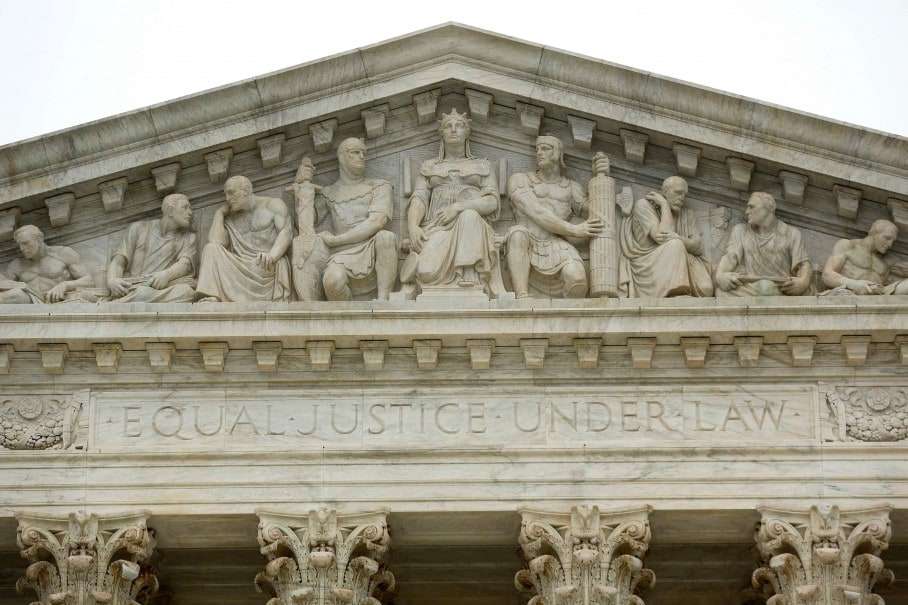The Volokh Conspiracy
Mostly law professors | Sometimes contrarian | Often libertarian | Always independent
Supreme Court smacks EPA for ignoring costs, but mercury rule likely to persevere

With its last decision of the OT2014 term, in Michigan v. EPA, the Supreme Court held, by a vote of 5-4, that the U.S. Environmental Protection Agency unreasonably failed to consider costs when deciding to regulate mercury emissions from power plants. Justice Scalia's opinion for the Court is simultaneously broad and narrow, and does not preclude the EPA from regulating mercury emissions going forward.
Section 112 of the Clean Air Act provides that the EPA must regulate emissions of hazardous air pollutants from power plants if the agency concludes that such regulation is "appropriate and necessary." The EPA made such a conclusion in 2000 and (after the Bush Administration failed in its effort to undo this finding) in 2012. Specifically, the EPA determined that mercury emissions from power plants - coal-fired power plants in particular - posed health risks and could be controlled effectively. The EPA did not, however, consider the costs in determining whether mercury emissions from power plants should be regulated, and therein lay the problem.
Writing for the Court, Justice Scalia concluded that it was unreasonable for the EPA to exclude any consideration of costs in making the threshold determination that mercury emissions should be regulated even if (as Justice Kagan stressed in dissent) costs would be considered by the agency as it developed specific emission standards. As Justice Scalia noted, it is a well-established principle of administrative law that agencies must consider all "relevant factors" when making regulatory determinations. From this perspective, the potential cost of regulation - here as much as $10 billion - is a "relevant factor" in determining whether it is appropriate to regulate. Justice Scalia acknowledged that the EPA's interpretation of the relevant statutory language was entitled to Chevron deference, but held that the EPA's interpretation of "appropriate and necessary" was unreasonable.
Congress instructed EPA to add power plants to the program if (but only if) the Agency finds regulation "appropriate and necessary." §7412(n)(1)(A). One does not need to open up a dictionary in order to realize the capaciousness of this phrase. In particular, "appropriate" is "the classic broad and all-encompassing term that naturally and traditionally includes consideration of all the relevant factors." 748 F. 3d, at 1266 (opinion of Kavanaugh, J.). Although this term leaves agencies with flexibility, an agency may not "entirely fai[l] to consider an important aspect of the problem" when deciding whether regulation is appropriate. State Farm, supra, at 43.
Read naturally in the present context, the phrase "appropriate and necessary" requires at least some attention to cost. One would not say that it is even rational, never mind "appropriate," to impose billions of dollars in economic costs in return for a few dollars in health or environmental benefits. In addition, "cost" includes more than the expense of complying with regulations; any disadvantage could be termed a cost. EPA's interpretation precludes the Agency from considering any type of cost- including, for instance, harms that regulation might do to human health or the environment. The Government concedes that if the Agency were to find that emissions from power plants do damage to human health, but that the technologies needed to eliminate these emissions do even more damage to human health, it would still deem regulation appropriate. See Tr. of Oral Arg. 70. No regulation is "appropriate" if it does significantly more harm than good.
Justice Scalia's opinion seems to embody a default principle that agencies should consider costs when making regulatory determinations, and that costs are not confined to the compliance expenditures of regulated entities.
The breadth of Justice Scalia's opinion in this regard is reinforced by the dissent's acknowledgement that costs must play a role in regulatory decision-making. "I agree with the majority-let there be no doubt about this-that EPA's power plant regulation would be unreasonable if "[t]he Agency gave cost no thought at all," Justice Kagan stresses at the outset of her opinion. Later on she repeatedly cites Justice Breyer's Entergy Corp. v. Riverkeeper concurrence and endorses a default presumption that agencies must consider costs when setting regulatory standards. In Justice Kagan's view, the EPA reasonably deferred consideration of costs until it set emission standards. Nowhere in her opinion, however, does she ever defend the claim that the EPA could ignore costs altogether.
While Michigan v. EPA helps cement the role of cost consideration into regulatory decision-making, the decision is narrow in that it is unlikely to represent more than a speed-bump for the EPA's mercury rules. The EPA will be required to further justify its decision to regulate power-plant mercury emissions with reference to the potential costs of such regulation - and developing such a justification may take some time - but it's unlikely this will preclude the agency from moving forward. Indeed, it's not entirely clear that the rule will be vacated once remanded to the agency. For the time being the case will be remanded to the U.S. Court of Appeals for the D.C. Circuit, and this court has a habit of remanding without vacatur when there's little reason to think the agency will alter its course.
Show Comments (0)